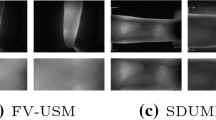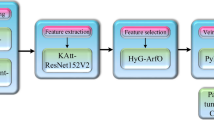Abstract
Metaverse, which is anticipated to be the future of the internet, is a 3D virtual world in which users interact via highly customizable computer avatars. It is considerably promising for several industries, including gaming, education, and business. However, it still has drawbacks, particularly in the privacy and identity threads. When a person joins the metaverse via a virtual reality (VR) human-robot equipment, their avatar, digital assets, and private information may be compromised by cybercriminals. This paper introduces a specific Finger Vein Recognition approach for the virtual reality (VR) human-robot equipment of the metaverse of the Metaverse to prevent others from misappropriating it. Finger vein is a is a biometric feature hidden beneath our skin. It is considerably more secure in person verification than other hand-based biometric characteristics such as finger print and palm print since it is difficult to imitate. Most conventional finger vein recognition systems that use hand-crafted features are ineffective, especially for images with low quality, low contrast, scale variation, translation, and rotation. Deep learning methods have been demonstrated to be more successful than traditional methods in computer vision. This paper develops a finger vein recognition system based on a convolution neural network and anti-aliasing technique. We employ/ utilize a contrast image enhancement algorithm in the preprocessing step to improve performance of the system. The proposed approach is evaluated on three publicly available finger vein datasets. Experimental results show that our proposed method outperforms the current state-of-the-art methods, improvement of 97.66% accuracy on FVUSM dataset, 99.94% accuracy on SDUMLA dataset, and 88.19% accuracy on THUFV2 dataset.




Similar content being viewed by others
Data availability statement
The datasets generated during and analyzed during the current study are available in the FV-USM dataset [26] repository, [http://drfendi.com/fv_usm_database/]. The datasets generated during and analyzed during the current study are available in the SDUMLA dataset [28] repository, [https://tsapps.nist.gov/BDbC/Search/Details/420]. The datasets generated during and analyzed during the current study are available in the THUFV2 dataset [27] repository, [https://www.sigs.tsinghua.edu.cn/labs/vipl/thu-fvfdt.html].
6. References
Mozumder MAI, Sheeraz MM, Athar A, Aich S, Kim HC (2022) Overview: technology roadmap of the future trend of metaverse based on IoT, Blockchain, AI Technique, and Medical Domain Metaverse Activity. In: 2022 24th International Conference on Advanced Communication Technology (ICACT), 2022, pp 256–261, doi: https://doi.org/10.23919/ICACT53585.2022.9728808.
Dionisio JD, Burns WG, Gilbert R (2013) 3D virtual worlds and the metaverse: current status and future possibilities. ACM Comput Surv 45:341–3438
Han Y, Oh S (2021) Investigation and research on the negotiation space of mental and mental illness based on metaverse. In: 2021 International Conference on Information and Communication Technology Convergence (ICTC), 2021, pp 673–677. doi:https://doi.org/10.1109/ICTC52510.2021.9621118
Park SM, Kim YG (2022) A metaverse: taxonomy, components, applications, and open challenges. IEEE Access 10:4209–4251. https://doi.org/10.1109/ACCESS.2021.3140175
Lee SH, Lee YE, Lee SW (2022) Toward imagined speech based smart communication system: potential applications on metaverse conditions. In: 2022 10th International Winter Conference on Brain Computer Interface (BCI), pp 1–4, doi:https://doi.org/10.1109/BCI53720.2022.9734827.
Wang K, Kumar A (2022) Human identification in metaverse using egocentric iris recognition
Tayal Y, Kumar Pandey P, Singh DBV (2013) Face recognition using eigenface. Int J Emerg Technol Comput Appl Sci 3(1):50–55
Daugman J (2009) How iris recognition works. In: The essential guide to image processing, pp 715–739. Elsevier
Miura N, Nagasaka A, Miyatake T (2004) Feature extraction of finger-vein patterns based on repeated line tracking and its application to personal identification. Mach Vis Appl 15(4):194–203
Miura N, Nagasaka A, Miyatake T (2007) Extraction of finger vein patterns using maximum curvature points in image profiles. IEICE Trans Inf Syst 90(8):1185–1194
Huang B, Dai Y, Li R, Tang D, Li W (2010) Finger vein authentication based on wide line detector and pattern normalization. In: 2010 20th International Conference on Pattern Recognition. IEEE, 2010, pp 1269–1272
Zhang W, Wang Y (2002) “Core based structure matching algorithm of Finger Vein verification,” in Object recognition supported by user interaction for service robots. IEEE 1:70–74
Nagao M (1983) Methods of image pattern recognition. Corona, San Antonio, TX
Otter DW, Medina JR, Kalita JK (2020) A survey of the usages of deep learning for natural language processing. IEEE Trans Ne ural Netw Learn Syst 32(2):604–624
Nassif AB, Shahin I, Attili I, Azzeh M, Shaalan K (2019) Speech recognition using deep neural networks: a systematic review. I EEE Access 7:19143–19165
Wu X, Sahoo D, Hoi SCH (2020) Recent advances in deep learning for object detection. Neurocomputing 396:39–64
Minaee S, Abdolrashidi A, Su H, Bennamoun M, Zhang D (2019) Biometrics recognition using deep learning: a survey. arXiv:1912.00271
Liu W, Li W, Sun L, Zhang L, Chen P (2017) Finger vein recognition based on deep learning. In: 2017 12th IEEE Conference o n Industrial Electronics and Applications (ICIEA). IEEE, 2017, pp 205–210
Hong HG, Lee MB, Park KR (2017) “Convolutional neural network based finger vein recognition using nir image sensors”. Sensors 17(6):1297
Yang W, Hui C, Chen Z, Xue J-H, Liao Q (2019) Fvgan: finger vein representation using generative adversarial networks. IEEE Trans Inf Forens Secur 14(9):2512–2524
Zeng J et al., (2020) “Finger vein verification algorithm based on fully convolutional neural network and conditional random field”. IEEE Access 8:65402–65419
Rıdvan Salih Kuzu, Emanuele Maioranay, and Patrizio Campisi, “Vein-based biometric verification using transfer learning,” in 2020 43rd International Conferenceon Telecommunications and Signal Processing (TSP). IEEE, 2020, pp. 403–409.
Ying Z, Li G, Gao W (2017) A bioinspired multi-exposure fusion framework for low-light image enhancement. arxiv:1711.00591
Zhang R (2019) Making convolutional networks shift invariant again. In: International Conference on Machine Learning. PML R, pp 7324–7334
Deng J, Guo J, Xue N, Zafeiriou S (2019) Arcface: additive angular margin loss for deep face recognition. In: Proceedings of th e IEEE/CVF Conference on Computer Vision and Pattern Recognition, pp 4690–4699
Asaari MSM, Suandi SA, Rosdi BA (2014) Fusion of band limited phase only correlation and width centroid contour distance fo r finger based biometrics. Exp Syst Appl 41(7):3367–3382
Yang W, Qin C, Liao Q (2014) A database with ROI extraction for studying fusion of finger vein and finger dorsal texture. In: C hinese Conference on Biometric Recognition. Springer, pp 266–270
Yin Y, Liu L, Sun X (2011) SDUMLAHMT: a multimodal biometric database. In: Chinese Conference on Biometric Recognitio n. Springer, pp 260–268
Gao Huang, Zhuang Liu, Laurens Van Der Maaten, and Kilian Q Weinberger (2017) Densely Connected Convolutional Networks. In: Proceedings of the IEEE Conference on Computer Vision and Pattern Recognition, 2017, pp. 4700–4708.
Jain AK, Flynn P, Ross AA (2007) Handbook of biometrics. Springer Science & Business Media
Acknowledgements
This study was supported by the scientific research funds of Shandong University of Technology, Zibo, China. Jian-Hong Wang received his PhD degree in Communications Engineering from the National Chung Cheng University, Taiwan, in January 2015. He is currently a professor at School of Computer Science and Technology, Shandong University of Technology, Zibo, China. Jian-Hong Wang is the corresponding author of this paper and can be contacted at: wwwccucomtw@gmail.com or jhwang_2015@163.com.
Author information
Authors and Affiliations
Corresponding author
Ethics declarations
Conflict of interest
The authors declare no conflicts of interest regarding the publication of this paper.
Additional information
Publisher's Note
Springer Nature remains neutral with regard to jurisdictional claims in published maps and institutional affiliations.
Rights and permissions
About this article
Cite this article
Tran, N.C., Wang, J., Vu, T.H. et al. Anti-aliasing convolution neural network of finger vein recognition for virtual reality (VR) human–robot equipment of metaverse. J Supercomput 79, 2767–2782 (2023). https://doi.org/10.1007/s11227-022-04680-4
Accepted:
Published:
Issue Date:
DOI: https://doi.org/10.1007/s11227-022-04680-4




